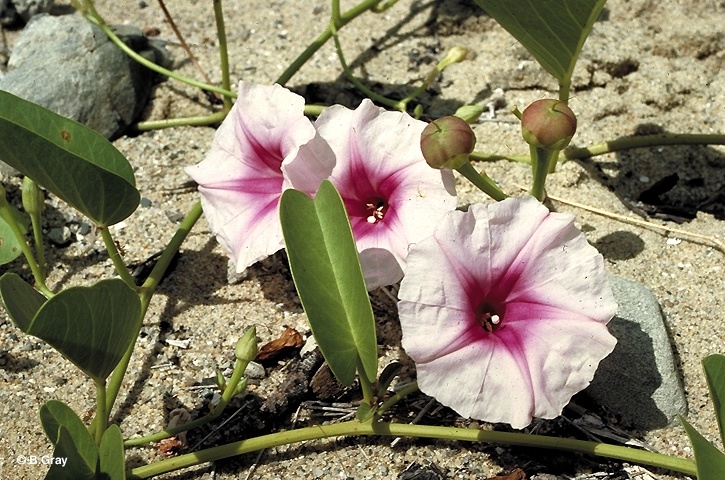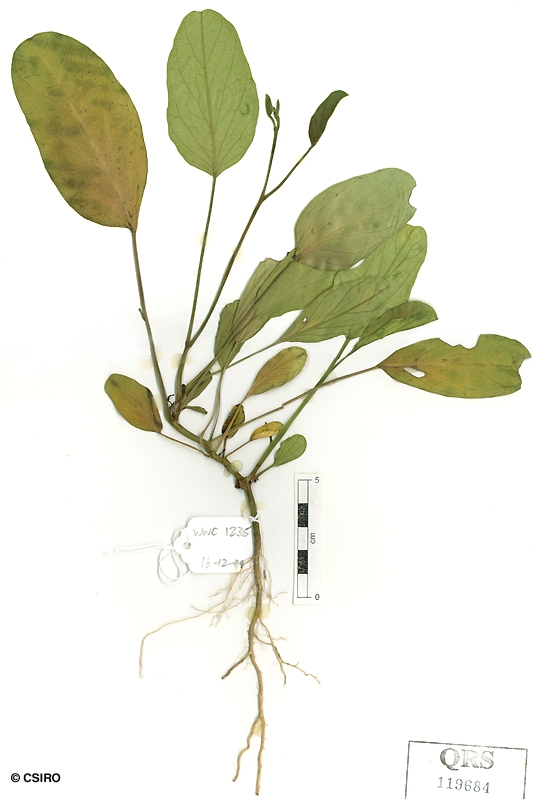Australian Tropical Rainforest Plants - Online edition
Ipomoea pes-caprae subsp. brasiliensis (L.) Ooststr.





Oostrstroom, S.J. van (1940) Blumea 3: 533.
Goat's Foot Convolvulus; Bay Hops; Convolvulus, Goat's Foot; Coast Morning Glory; Hops, Bay
A slender vine usually trailing along the ground not exceeding a stem diameter of 2 cm.
Leaf blades about 6.5-11.5 x 5-9 cm, petioles about 3.2-10 cm long. Lateral veins curving inside the blade margin. Freshly cut twigs produce a milky exudate.
Fruits globose, about 13-20 mm diam., calyx lobes persistent at the base. Pedicels about 50 mm long. Seeds dark brown, about 7-12 x 6-8 mm densely clothed in brown hairs. Embryo green. Cotyledons discrete, each bilobed, folded and rolled separately. Radicle about 4 mm long.
Seedling glabrous. Cotyledons thick and fleshy, bilobed or U-shaped, about 25 x 26-30 mm. Midrib almost reaching to the base of the notch at the apex of the cotyledon. First leaves elliptic, thick and fleshy, apex +/- retuse, base obtuse. Midrib depressed on the upper surface. At the tenth leaf stage: leaf blade elliptic, apex retuse to emarginate, base cuneate to obtuse. Plant and stem +/- prostrate. Midrib +/- flush with the upper surface. Oil dots visible with a lens near the apex and close to the margin. Petioles about as long as the leaf blades with 2 raised, crater-like glands on the upper surface near the junction with the leaf blade. Stomata rather large, orbicular, visible with a lens on both the upper and lower surfaces. Exudate cloudy. Seed germination time 91 days.
Occurs in WA, NT, CYP, NEQ, CEQ and around much of the rest of Australian coast line north of Sydney on the east coast and north of shark Bay on the west coast. Altitudinal range in northern Australia quite small, usually found just above sea level. Usually grows on the strand just above the high tide mark but also in beach forest and other types of vegetation near sea level. Also occurs in Africa, Asia, Malesia and the Pacific islands.





